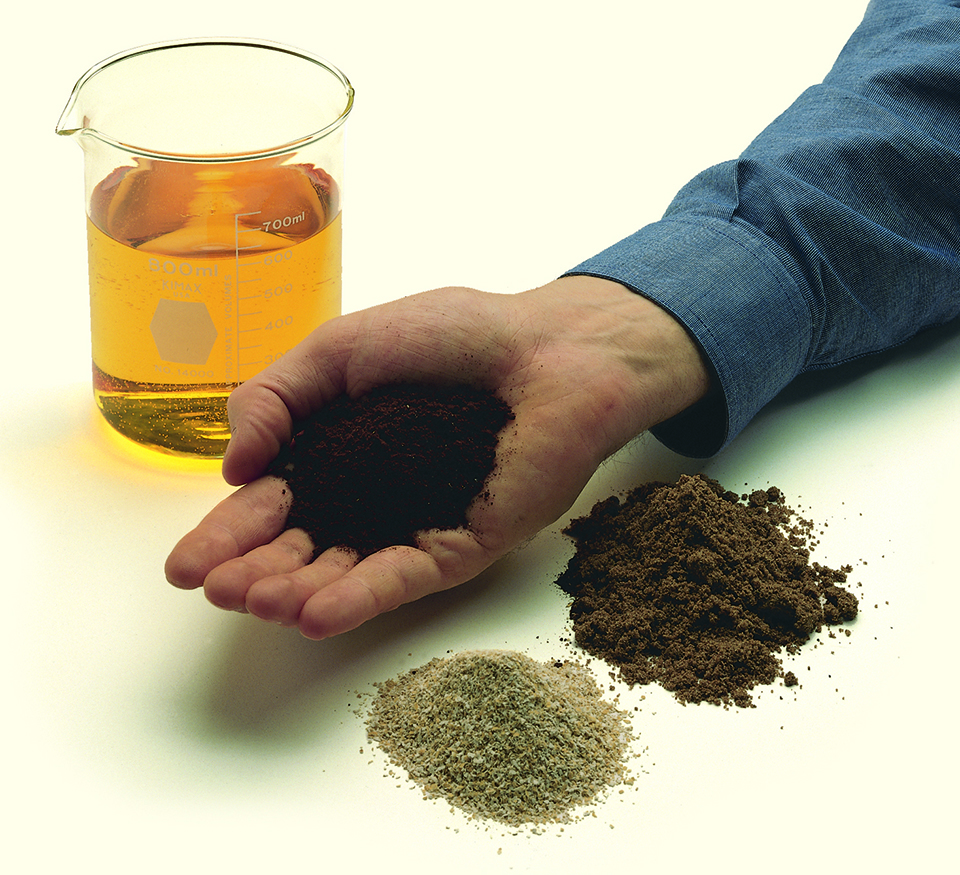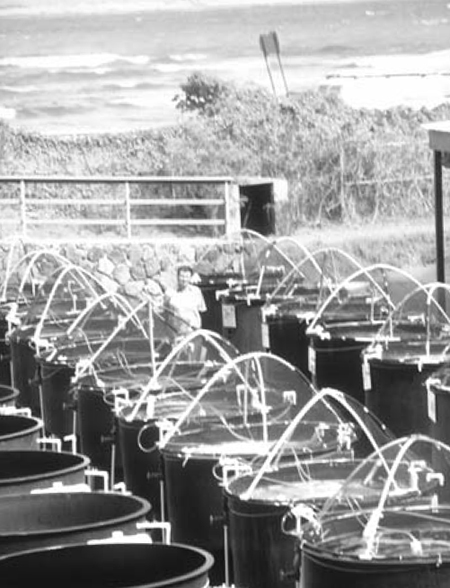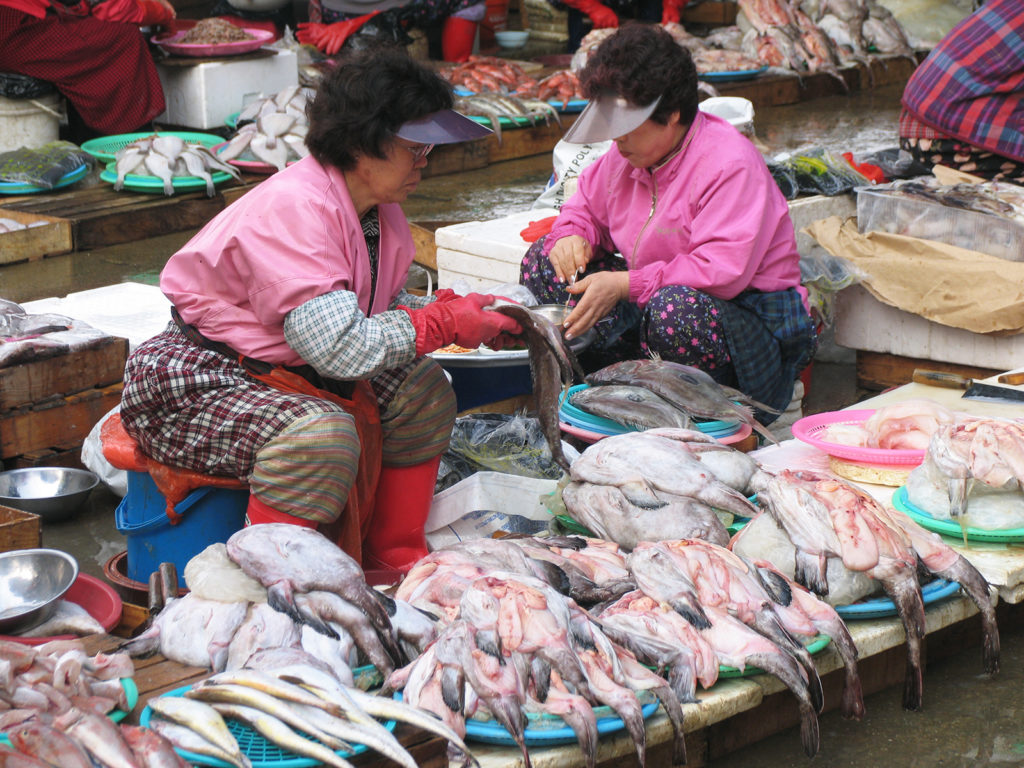Economic importance of aquafeeds
Aquatic feeds and feeding generally represent the largest single operating cost item (typically between 25 to 50 percent) of the total running expenses of most intensive and semi-intensive finfish and crustacean farming operations. Moreover, since the growth and production of all farmed aquatic animal species is entirely dependent upon the supply and intake of aquatic feeds or aquafeeds containing approximately 40 essential dietary nutrients, it follows therefore that feeds and feeding are central to biological and economic success, or lack thereof, for virtually all finfish and crustacean aquaculture enterprises.
According to the latest available information, the global production of industrially manufactured compound aquafeeds in 1998 was estimated to be 12.6 million metric tons (million metric tons) and valued at over $6 to 7 billion; the estimated global feed production for the major fed, cultured species includes feed for carps (6.25 million MT), marine shrimp (1.54 million MT), salmon (1.16 million MT), marine finfish (0.94 million MT), tilapia (0.78 million MT), trout (0.73 million MT), catfish (0.66 million MT), milkfish (0.30 million MT), and eel (0.26 million MT).
Although the U.S. currently ranks first in terms of the global production of industrially manufactured animal feeds (140.5 million MT in 1998, or 24.4 percent of total global production), its domestic aquaculture sector (0.35 million MT in 1997 and valued at $0.93 billion) is still very young and modest compared to the terrestrial livestock production sector, with total compound aquafeed production amounting to 0.5 million MT in 1998, or about 4 percent of total global aquafeed production in 1998.
With the domestic aquaculture sector currently representing the fastest growing segment of U.S. agriculture (surpassing in value most domestic fruit, vegetable, and nut crops), the potential for increased aquaculture and therefore aquafeed production in the U.S. and globally is considerable.
Objective of the AQUAFAN program
The long term strategic objective of OI’s Aquatic Feeds and Nutrition (AQUAFAN) program is to technically support and assist the aquaculture and aquafeed manufacturing sector within the State of Hawaii, the United States, and the international community, through the development and dissemination of new and/or improved aquatic feeds and associated feeding technologies which are nutritionally adjusted and tailored to the intended target species and farming system, as well as being economically viable and environmentally compatible with the sustainable development of the aquaculture sector.
The AQUAFAN Program prides itself in its multidisciplinary and holistic approach to aquatic feeds and nutrition research, and in particular its ability to conduct both fundamental classical studies on warmwater crustacean and finfish nutrition, and more applied studies on ingredient processing and commercial aquafeed manufacture, as well as studies related to the development and use of environmentally sound on-farm feed and pond management practices.
Research infrastructure
The AQUAFAN program possesses several unique attributes which contribute to its success in conducting research on aquatic feeds and nutrition, including:
- Four Indoor Controlled Labs (ICL) for conducting experimental feeding trials with marine crustaceans and/or finfish under clean-water laboratory conditions; Facility A: 75 × 52-liter rectangular glass rearing tanks, Facility B: 36 × 52-liter rearing tanks, 12 × 500-liter digestibility measurement tanks; Facility C: 60 × 52-liter rearing tanks, Facility D: 24 × 52-liter rearing tanks;
- One Outdoor Mesocosm Laboratory (OML), containing 56 × 1.4 cubic-meter experimental microcosm tanks for conducting outdoor feeding trials under conditions designed to mimic intensive clear-water or greenwater outdoor managed tanks;
- Central Analytical Laboratory (see photo to the left) for the routine analysis of feed ingredients, aquafeeds, animal tissue samples, and tank/pond water; routine analyses including proximate composition, minerals and trace elements, bomb calorimetry, amino acids, fatty acids, specific vitamins and nutrients, pellet stability, pellet texture, as well as chemical and microbial water and waste-water analyses; and
- Laboratory Aquafeeds Production Facility for the experimental production of semi-purified and practical crustacean/finfish feeds, including a CPM laboratory-scale pellet Insta-Pro Model 600 dry extruder, a 150-pound mixer, a 50-pound ribbon blender, a Hobart mixer and a Jacobson Model 16H Air-swept pulverizer, a hammer mill, a meat grinder/crumbler, a chilled feed storage room with plastic storage bins and weighing scales, a Despatch forced -air drying oven with an 18-foot chain belt conveyor, a two-door vertical drying cabinet with air-blower and vent fans.
(Editor’s Note: This article was originally published in the December 1999 print edition of the Global Aquaculture Advocate.)
Now that you've reached the end of the article ...
… please consider supporting GSA’s mission to advance responsible seafood practices through education, advocacy and third-party assurances. The Advocate aims to document the evolution of responsible seafood practices and share the expansive knowledge of our vast network of contributors.
By becoming a Global Seafood Alliance member, you’re ensuring that all of the pre-competitive work we do through member benefits, resources and events can continue. Individual membership costs just $50 a year.
Not a GSA member? Join us.
Author
-

Albert G.J. Tacon, Ph.D.
Aquatic Feeds and Nutrition (AQUAFAN) Program
The Oceanic Institute
Waimanalo, Hawaii 96795 USA
Tagged With
Related Posts

Aquafeeds
A look at phospholipids in aquafeeds
Phospholipids are the major constituents of cell membranes and are vital to the normal function of every cell and organ. The inclusion of phospholipids in aquafeeds ensures increased growth, better survival and stress resistance, and prevention of skeletal deformities of larval and juvenile stages of fish and shellfish species.

Aquafeeds
Animal co-product hydrolysates sources of key molecules in aquafeeds
Key molecules found in animal byproduct hydrolysates show potential for use as functional ingredients in aquaculture feeds. Animal co-product hydrolysates from slaughterhouse waste and rendered animal byproducts present a protein alternative.

Aquafeeds
Aquafeeds and The Oceanic Institute’s AQUAFAN program, part 2
During the first year of AQUAFAN, a committee helped identify and prioritize needs of the shrimp farming and feeds industries.

Intelligence
Food matters: A comparative analysis of fish, income and food supply
Authors analyzed the role played by fish and fishery products – from aquaculture or from wild capture fisheries – in the diets of the richest and poorest countries. Fish and fishery products have an essential function in human nutrition.

